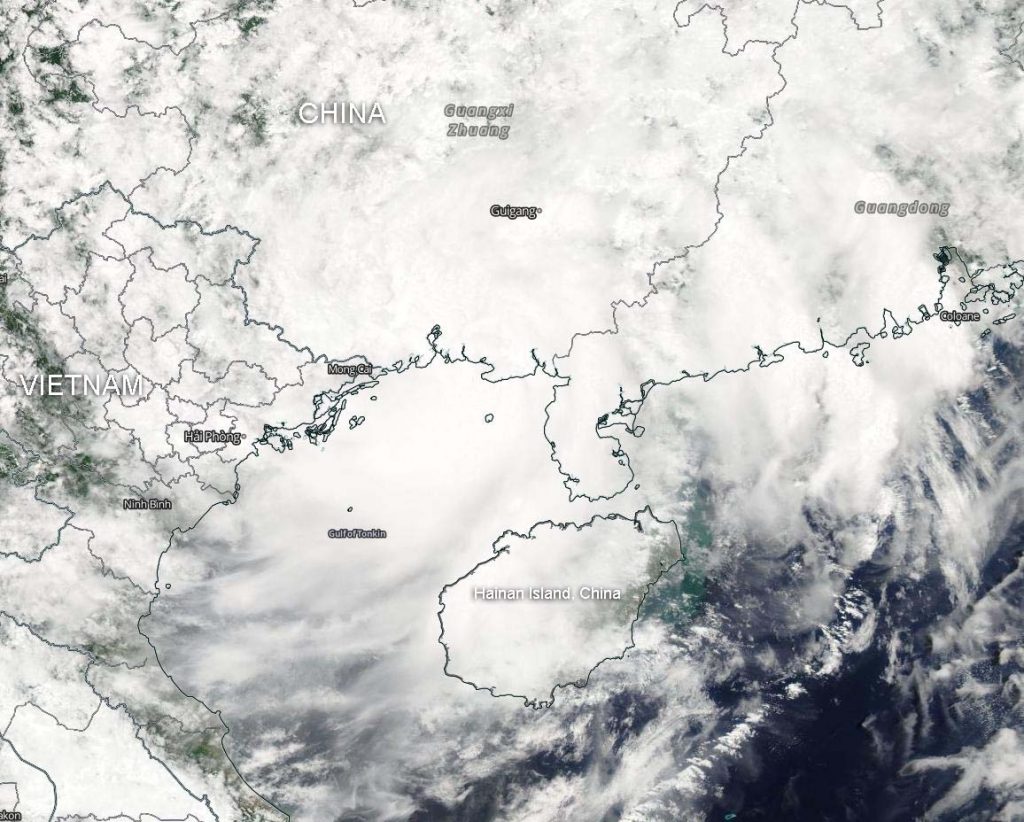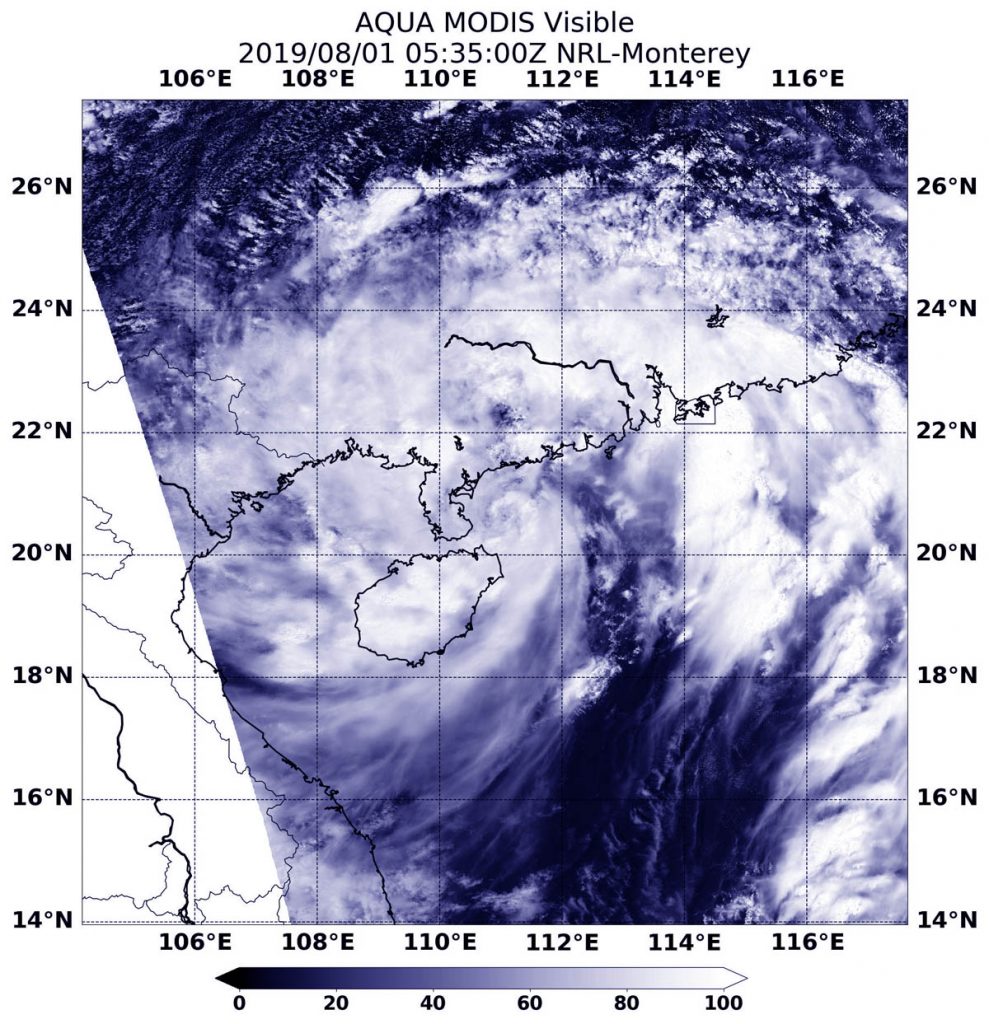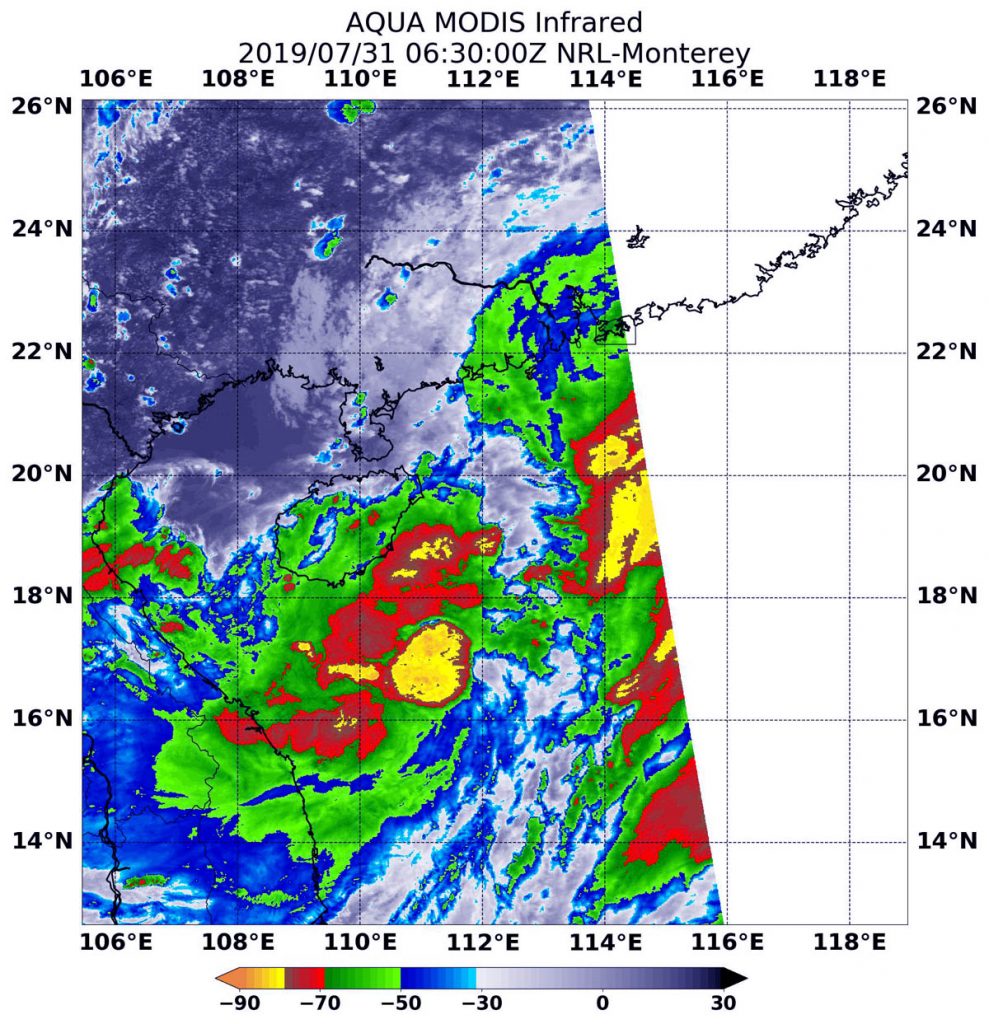Aug. 02, 2019 – NASA Satellite Finds Tropical Storm Wipha Blankets the Gulf of Tonkin
Visible satellite imagery from NASA’s Aqua satellite showed the clouds from Tropical Storm Wipha blanketing the Gulf of Tonkin.

The Gulf of Tonkin is a body of water located in the northern part of the South China Sea. It is located off the coast of northern Vietnam and southern China.
On Aug. 2, 2019, a Tropical Storm Warning was in effect for coastal areas in northeastern Vietnam. The Vietnam National Center for Hydro-Meteorological Forecasting (NCHF) expects Wipha to track along the southern China coast and move into Vietnam tracking to the southwest. NCHF expects Wipha’s center to pass just south of Hanoi.
At 11 a.m. EDT (1500 UTC) on Aug. 2, Wipha had maximum sustained winds near 35 knots (40 mph/64 kph). It was centered near 21.6 degrees north latitude and 108.5 degrees east longitude, about 150 nautical miles east-northeast of Hanoi, Vietnam. Wipha was moving to the west.
The Moderate Resolution Imaging Spectroradiometer or MODIS instrument aboard Aqua captured a visible image of Wipha on August 2. The MODIS image showed that clouds associated with Wipha filled up the Gulf of Tonkin. Satellite data showed that bands of thunderstorms were wrapping into a defined low-level circulation center.
The Joint Typhoon Warning Center said that Wipha is expected to make landfall by 11 p.m. EDT on Aug. 2 (0300 UTC on Aug. 3) in northern Vietnam. Then it will weaken as it moves to the west-southwest and over north Vietnam, where it will dissipate.


